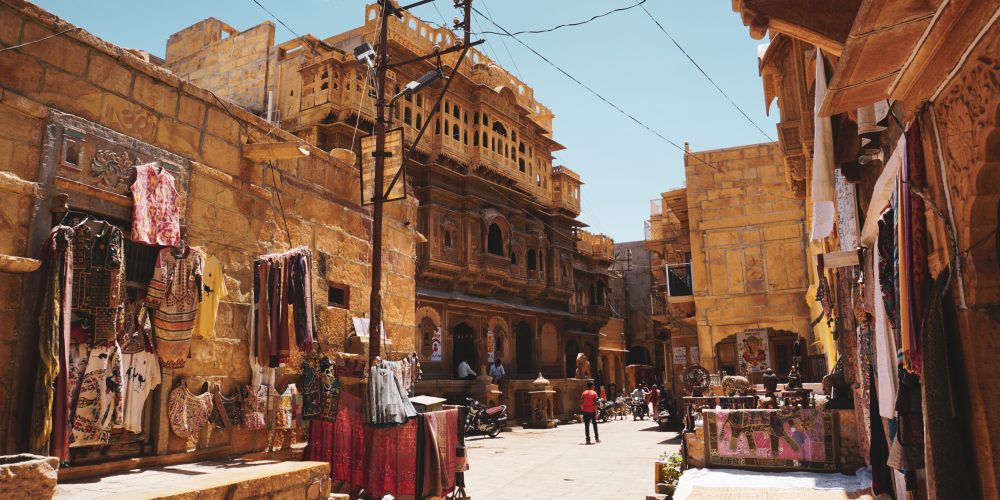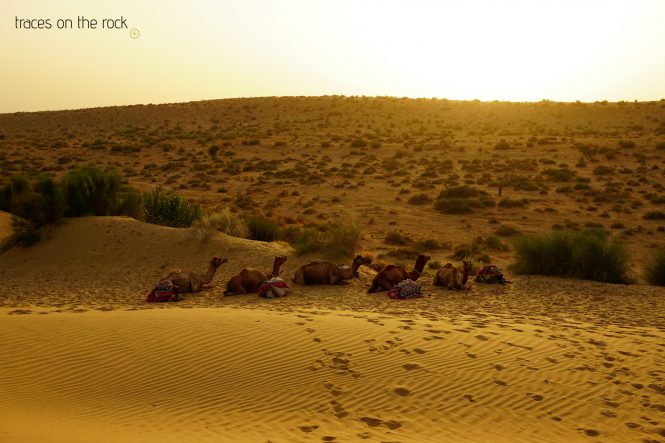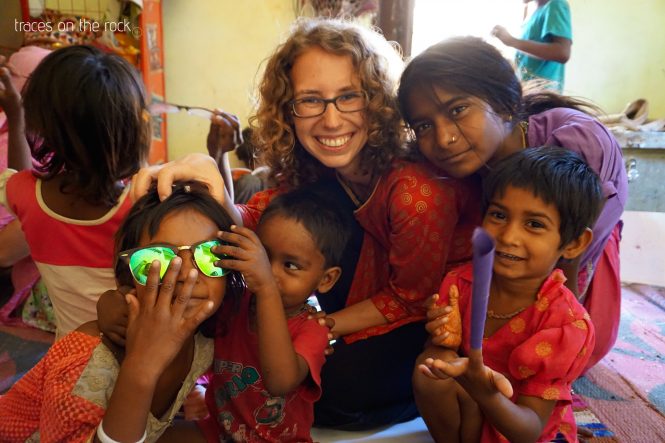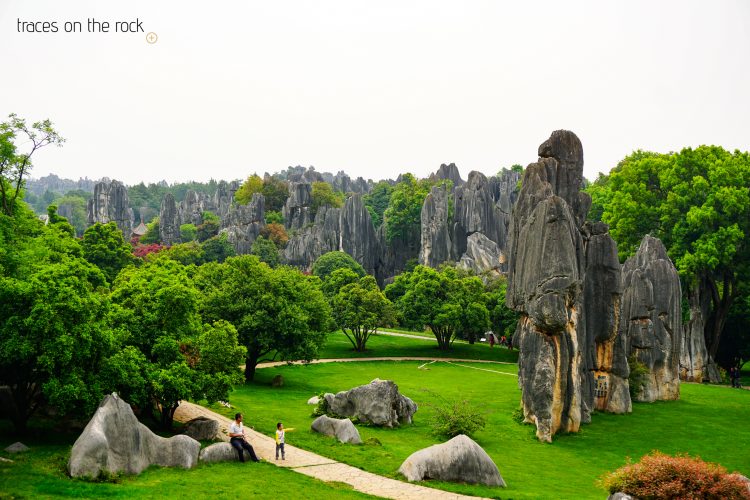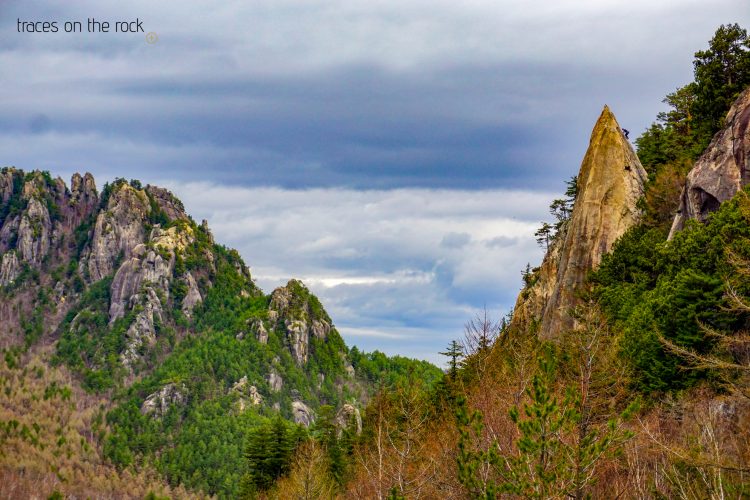The golden city of Jaisalmer is located in the heart of the Thar Desert. It has its name because of the yellow sandstone, from which the fortress and many buildings of the city are built. The city is located on the famous Silk Road and has helped the city to prosperity. Today, tourism and the nearby military are the cornerstone of the economy. Among the main attractions of the city include the fortress with its various Jaintempeln and the former residential and commercial buildings of the merchants: the Havelis. Jaisalmer is the second oldest city in Rajasthan
No cloud clouds the sky as we reach the city. The sun shines with all its power. There are hardly any trees that provide protection and cooling. Only now and then does a light breeze blow. The desert climate is relentless. The fine sand creeps into every pore. My skin looks as if it has been sandpapered. I try to protect my belongings in the best possible way – in vain. Everything is covered by a fine layer of sand. The heat is oppressive. The climate has a decelerating effect. Everything is a bit slower and more deliberate. The people, the animals, me.
Between art and trash
We meet the Australian artist Angelika, who tells us about an artists’ settlement near the city. We are interested and decide to visit them as well. I have big expectations. Artist settlements are colorful and the works of the artists are displayed everywhere. At least that’s what my idea looked like. We meet the street vendor Fulli. The day before she had successfully sold five anklets to Mary. She lives with six children aged three to twelve in the settlement. The touch of art that I expected did not radiate at this place. It was an impoverished settlement. There were no art installations or artistically painted houses, no shops selling homemade jewelry, scarves or carvings. For me, the settlement was devoid of every aspect of an art settlement, as I knew it from other places.
Fulli is again very enterprising. We sat in her one-room hut on the floor. The children played around us and sought our attention. Angelika painted with them. Meanwhile, Fulli tried to convince us to buy her jewelry or clothes. Little by little she pulled out of her bags neclaces and anklets and placed them in front of us. In some cases gemstones are missing or chain links were closed unclean. She was persistent. Over time, her sales strategy changed. If she initially emphasized the quality of the jewelry, she spoke more and more of illness and urgently needed medicine. I did not like this kind of conversation. I doubted her statements. It is not the first time in my journey that I have faced such a situation. How do one best behave in this situation? If I decide not to buy anything, I still have a guilty conscience that I did not honor her sales efforts and stole her time. During my research, I came across this article, which takes another look at Fulli’s life. It shows that we are always and everywhere dealing with people. But it also shows that when someone expects us to be seen as human, he should also see a human in us and not just someone with money in their pockets. To openly and honestly meet someone opens their hearts. Dishonesty on the other side, closes hearts and opportunities.
Afterwards we visited the salesrooms of a carpet dealer. Gradually, he showed us some beautiful pieces, which should be made by local craftsmen. Again, I doubted the statements. The dealers in Jaiselmer have been altogether very enterprising. This was probably a vestige of the time when the Silk Road dominated the life and economy of the city.
123 India nothing free
old man on the street
456 India nothing fix
789 We are here super fine
A tour in the Thar desert
Jaisalmer was once a prosperous city due to trade between India and the Middle East. For this purpose, mainly camels were used. We took this as an opportunity to do a two-day camel tour as well. We stayed surprisingly comfortable on cots between the dunes. Had the moon not shone so much, we would certainly have seen the Milky Way. Unfortunately, that was again denied me.
Part of the tour was also the visit of the ghost town Kuldhara. The former city only consists of ruins. The roofs are largely sunken and occasionally walls of sandstone rise in the air. Certain stones were certainly also used as building material. We can still partially recognize the floor plan with doors and windows. The origins of the once prosperous city date back to the 13th century. Earlier, the Paliwal Brahmins lived here. The cause of the abandonment of the city are not completely clear. Historians suspect that the wells dried out or the threat of Salim Singh could be the cause of the disappearance of the population. Recent research from 2017 also suggests that an earthquake could be responsible for the city’s fate. The legends about the ghost town are more imaginative. They say the residents left the city overnight. Allegedly, Salim Singh had his eye on one of the girls and sent his guards to fetch her. The residents asked to come back the next day. That same night, the Paliwal Brahmins would have left the place.
no hurry, no worry
Indian quote
no chicken, no curry
don’t worry, be happy
no chai, no chapati
no woman, no crying in the desert

